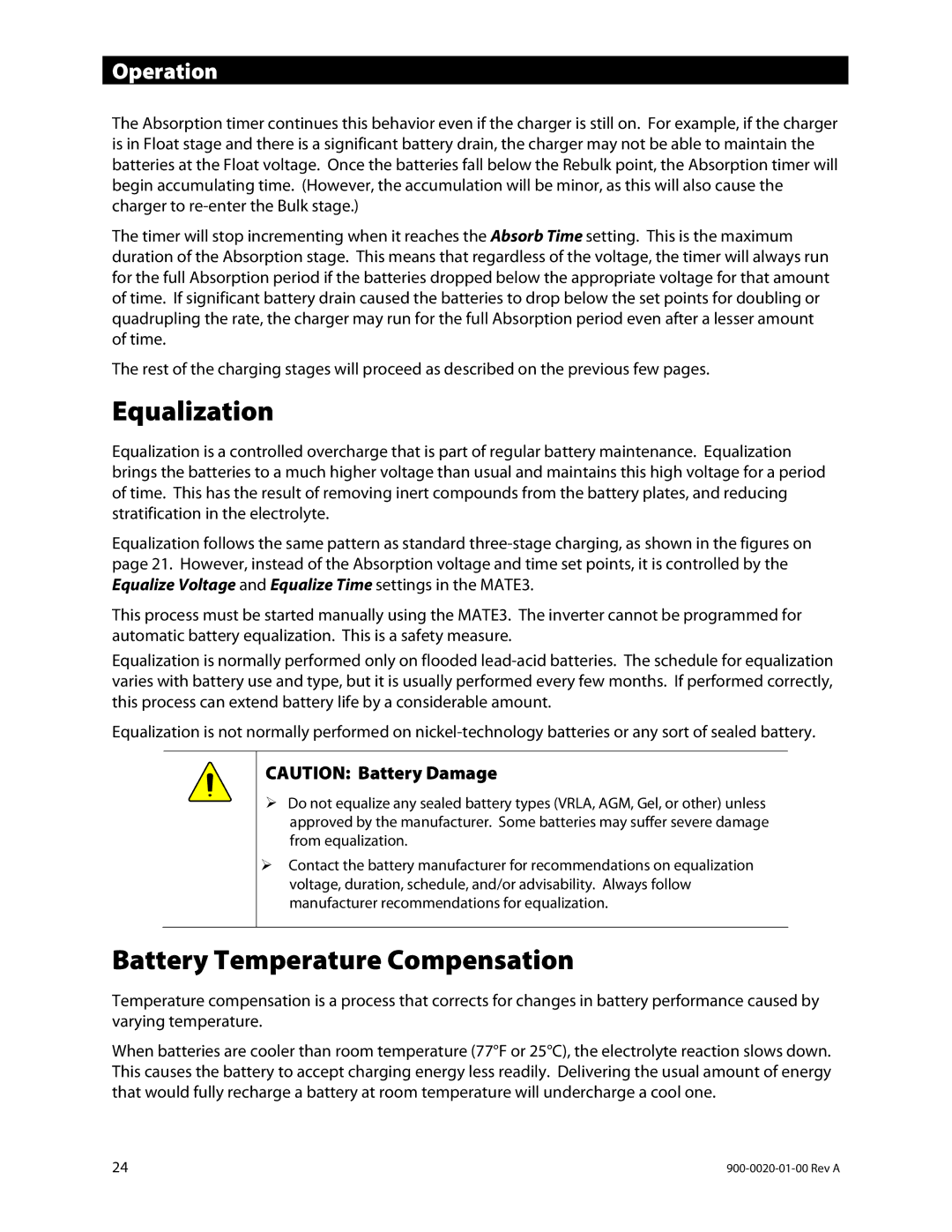
Operation
The Absorption timer continues this behavior even if the charger is still on. For example, if the charger is in Float stage and there is a significant battery drain, the charger may not be able to maintain the batteries at the Float voltage. Once the batteries fall below the Rebulk point, the Absorption timer will begin accumulating time. (However, the accumulation will be minor, as this will also cause the charger to
The timer will stop incrementing when it reaches the Absorb Time setting. This is the maximum duration of the Absorption stage. This means that regardless of the voltage, the timer will always run for the full Absorption period if the batteries dropped below the appropriate voltage for that amount of time. If significant battery drain caused the batteries to drop below the set points for doubling or quadrupling the rate, the charger may run for the full Absorption period even after a lesser amount of time.
The rest of the charging stages will proceed as described on the previous few pages.
Equalization
Equalization is a controlled overcharge that is part of regular battery maintenance. Equalization brings the batteries to a much higher voltage than usual and maintains this high voltage for a period of time. This has the result of removing inert compounds from the battery plates, and reducing stratification in the electrolyte.
Equalization follows the same pattern as standard
This process must be started manually using the MATE3. The inverter cannot be programmed for automatic battery equalization. This is a safety measure.
Equalization is normally performed only on flooded
Equalization is not normally performed on
CAUTION: Battery Damage
Do not equalize any sealed battery types (VRLA, AGM, Gel, or other) unless approved by the manufacturer. Some batteries may suffer severe damage from equalization.
Contact the battery manufacturer for recommendations on equalization voltage, duration, schedule, and/or advisability. Always follow manufacturer recommendations for equalization.
Battery Temperature Compensation
Temperature compensation is a process that corrects for changes in battery performance caused by varying temperature.
When batteries are cooler than room temperature (77°F or 25°C), the electrolyte reaction slows down. This causes the battery to accept charging energy less readily. Delivering the usual amount of energy that would fully recharge a battery at room temperature will undercharge a cool one.
24 |
